Succulent Nutrient Deficiencies
Succulents may look tough, but they can struggle when they don’t get the right balance of nutrients. When this happens, you’ll often notice yellowing leaves, weak growth, or poor color. A nutrient deficiency in succulents occurs when the plant lacks essential elements like nitrogen, phosphorus, potassium, or trace minerals, which directly affects overall health and growth.
You might think water and sunlight are the only things these plants need, but the soil and its nutrients play an equally important role. Without the right conditions, succulents can show stress that looks like overwatering or disease, making it easy to miss the real issue. By learning how to recognize these signs, you can take quick action before the problem gets worse.
Understanding the most common nutrient deficiencies, how soil and watering habits affect them, and what steps restore balance will help you keep your succulents thriving. This guide will walk through the signs to look for, the nutrients that matter most, and practical ways to prevent and treat deficiencies.
Common Signs of Succulent Nutrient Deficiencies
When your succulent lacks essential nutrients, it often shows visible changes in leaf color, growth rate, and overall plant vigor. These signs help you identify whether the issue comes from poor soil nutrition rather than watering or light problems.
Yellowing Leaves and Chlorosis

Yellowing leaves often point to a lack of nitrogen, which is needed for healthy green growth. When nitrogen is low, older leaves usually turn pale or yellow first. This happens because the plant moves nitrogen to newer growth, leaving older leaves depleted.
Chlorosis, or the yellowing of leaves with the vascular tissue remaining green, can signal an iron or magnesium deficiency. Iron issues typically appear in new leaves, while magnesium problems tend to show up in older ones.
You should also consider soil pH. If the pH is too high or too low, nutrients like iron may be present but unavailable to the plant. Testing and adjusting soil conditions can prevent false signs of deficiency.
Stunted Growth and Poor Vigor
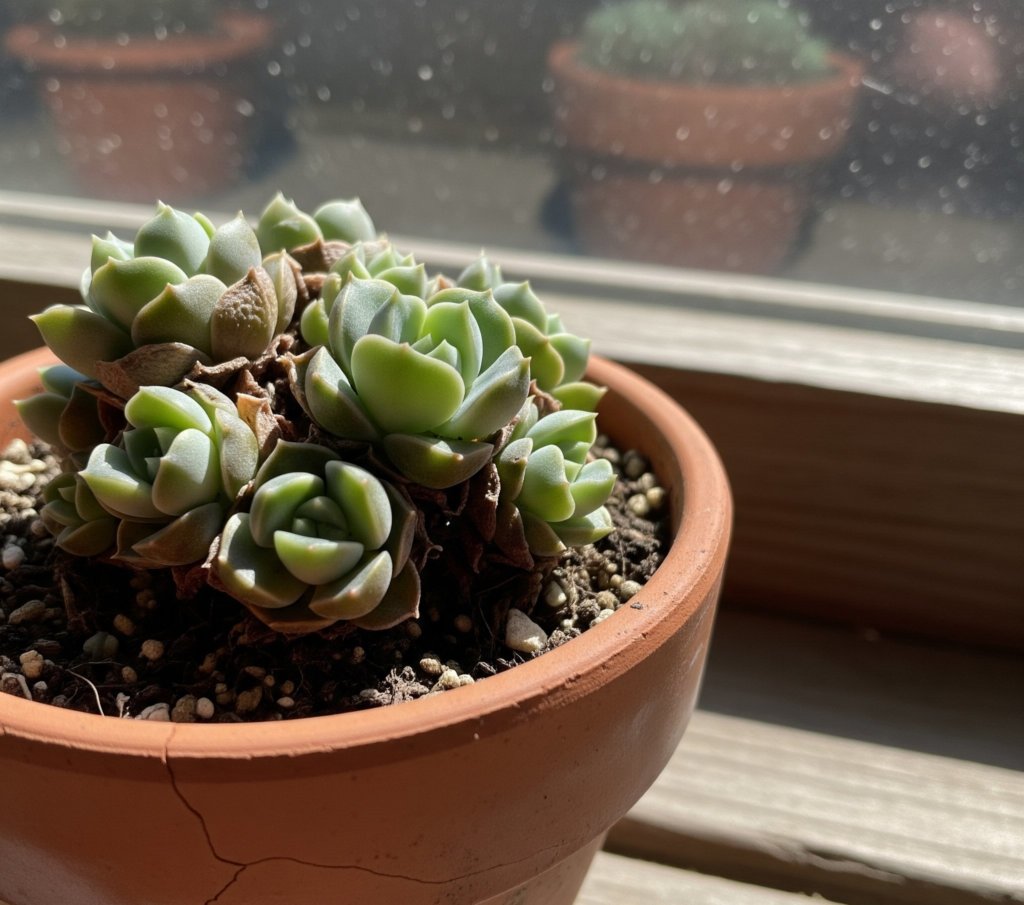
If your succulent grows slowly, produces fewer leaves, or looks weak, it may lack key macronutrients like nitrogen, phosphorus, or potassium. Nitrogen supports leaf growth, phosphorus aids root development, and potassium improves overall plant strength.
A deficiency in these nutrients can cause your succulent to stay small and fail to produce new growth. The plant may also lack its usual vibrant colors, appearing dull instead.
You may notice that even with proper watering and sunlight, the plant does not thrive. This is a strong sign that nutrient imbalance, not environmental stress, is the main issue.
Wilting and Leaf Drop
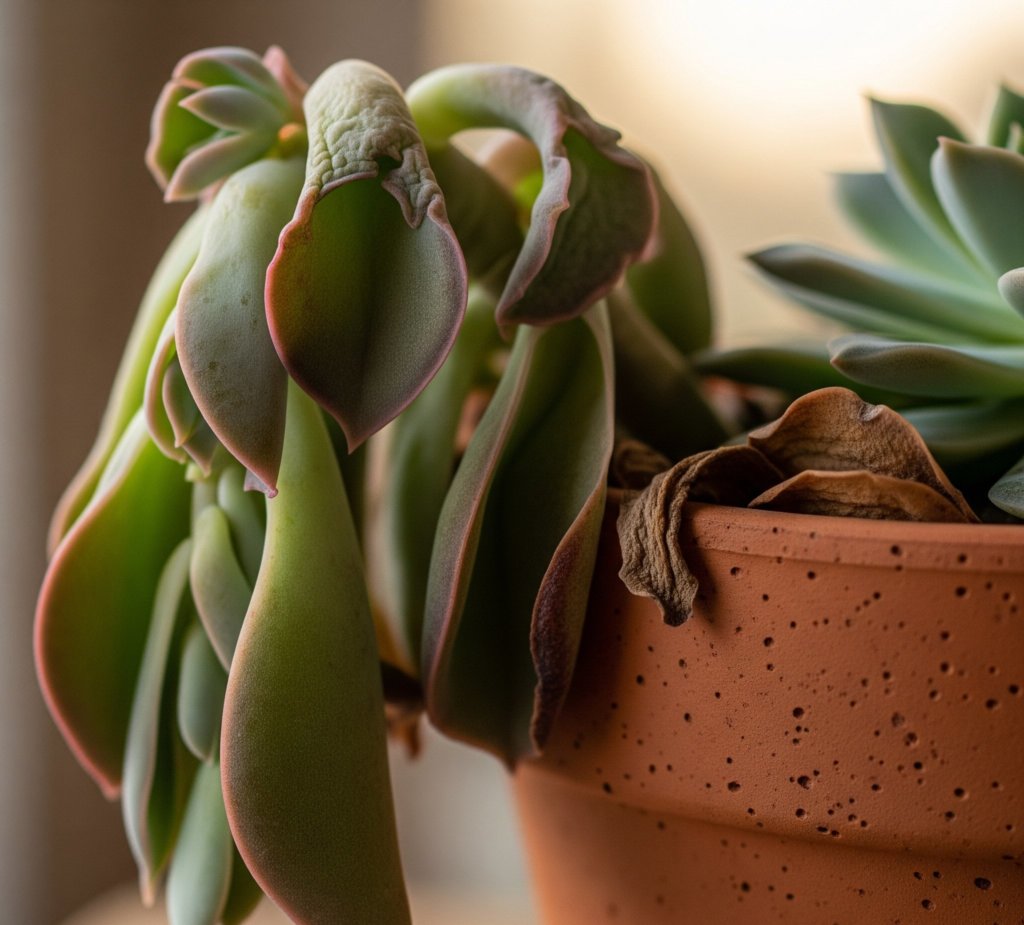
Wilting can occur when your succulent cannot take up enough nutrients due to poor soil quality or nutrient lockout. Even when watered correctly, the leaves may soften and droop if nutrients are missing.
Leaf drop is another response. When the plant cannot support all its leaves, it sheds them to conserve resources. This often happens with potassium deficiency, which weakens the plant’s ability to regulate water movement.
Check for other stress factors like overwatering, but if those are ruled out, nutrient problems are likely. Healthy succulents should hold leaves firmly and resist dropping them without cause.
Brittle or Deformed Succulent Leaves
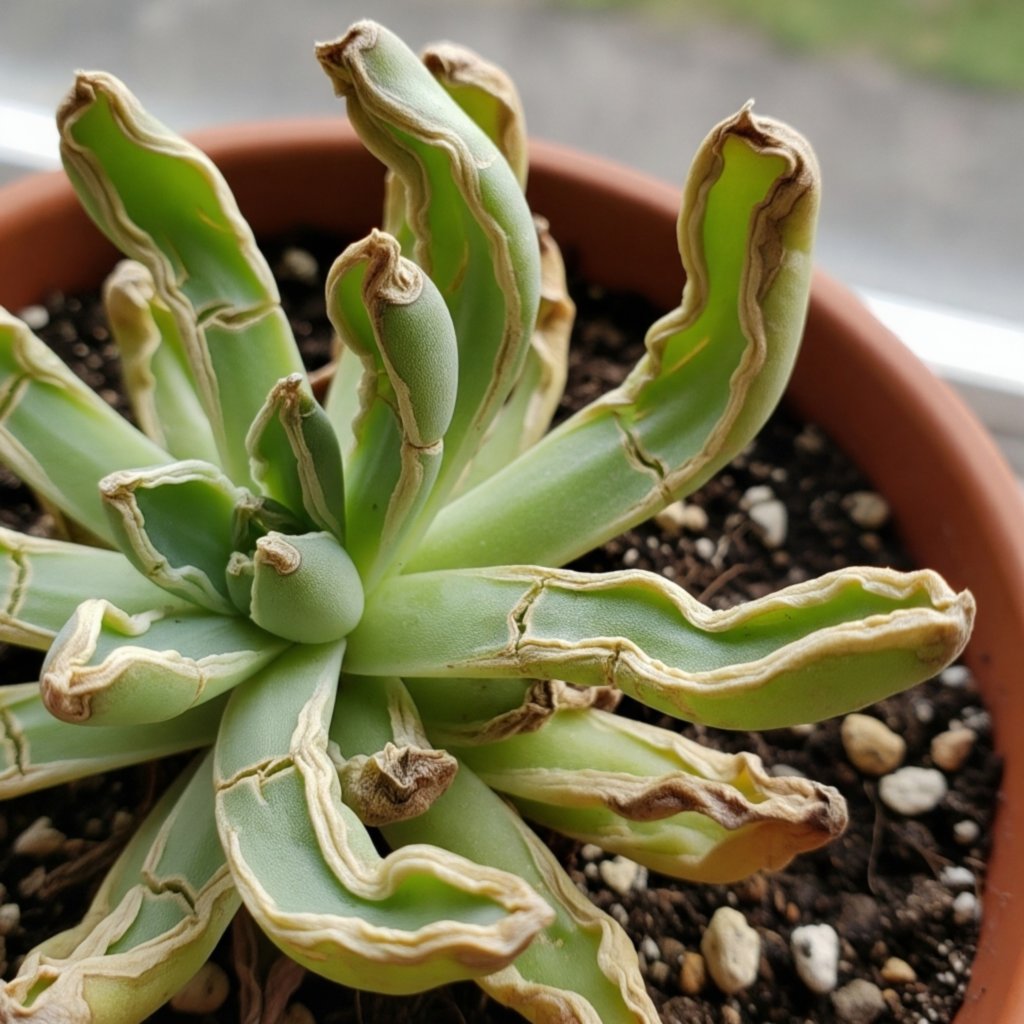
When succulent leaves become brittle, thin, or oddly shaped, it often signals a lack of calcium or other micronutrients. Calcium helps maintain strong cell walls, so without it, leaves may crack or break easily.
Deformed growth, such as curled or twisted leaves, can also point to nutrient imbalance. This is especially true when paired with discoloration or slowed growth.
In some cases, zinc or boron deficiencies cause distorted new leaves. These issues are less common but can appear if the soil mix is poor or if the plant has been in the same container for too long without fresh nutrients.
Key Nutrient Deficiencies in Succulents
Succulents rely on a balance of nutrients to support strong growth, healthy leaves, and efficient photosynthesis. When certain nutrients are lacking, you can often see clear signs in leaf color, shape, or growth patterns that help you identify the problem.
Nitrogen Deficiency
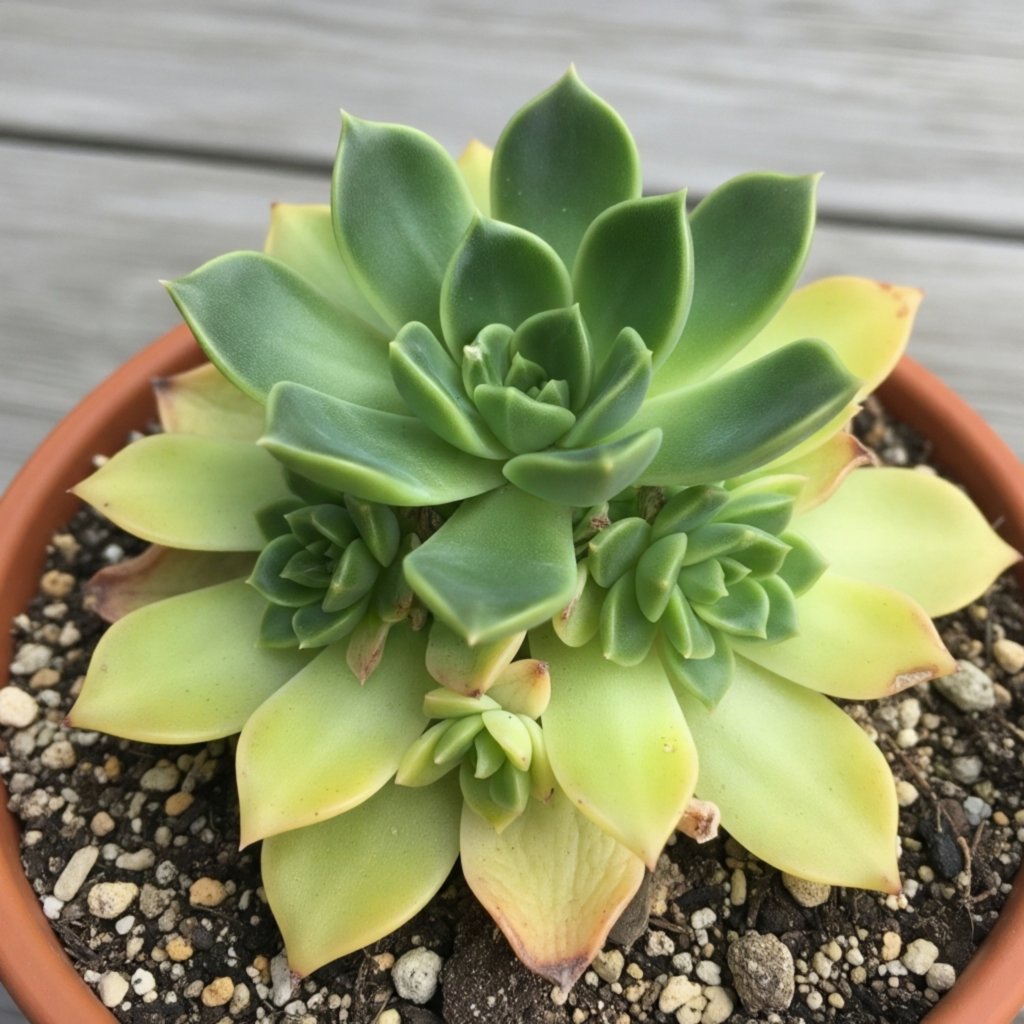
Nitrogen supports leaf development and overall plant vigor. When your succulent lacks nitrogen, growth slows, and older leaves often turn pale green or yellow. This happens because nitrogen moves from older tissue to newer growth, leaving the lower leaves depleted.
You may also notice smaller leaves or stunted growth. In severe cases, the plant may drop older leaves early.
To correct nitrogen deficiency, use a balanced fertilizer with a small but steady amount of nitrogen. Avoid overfeeding, since too much nitrogen can cause soft, weak growth that increases the risk of rot. Repotting into fresh soil can also restore nitrogen levels naturally.
Phosphorus Deficiency

Phosphorus plays a key role in root growth, energy transfer, and flower production. Without enough phosphorus, your succulent may show slow root development, weak stems, or poor flowering.
Leaves may appear dull, sometimes with a purplish or reddish tint. Growth can become uneven, and the plant may struggle to store energy in its tissues.
You can address phosphorus deficiency by applying a fertilizer with a higher middle number in the N-P-K ratio, such as 10-20-10. Make sure the soil drains well, since compacted or overly acidic soil can reduce the plant’s ability to absorb the phosphorus.
Potassium Deficiency
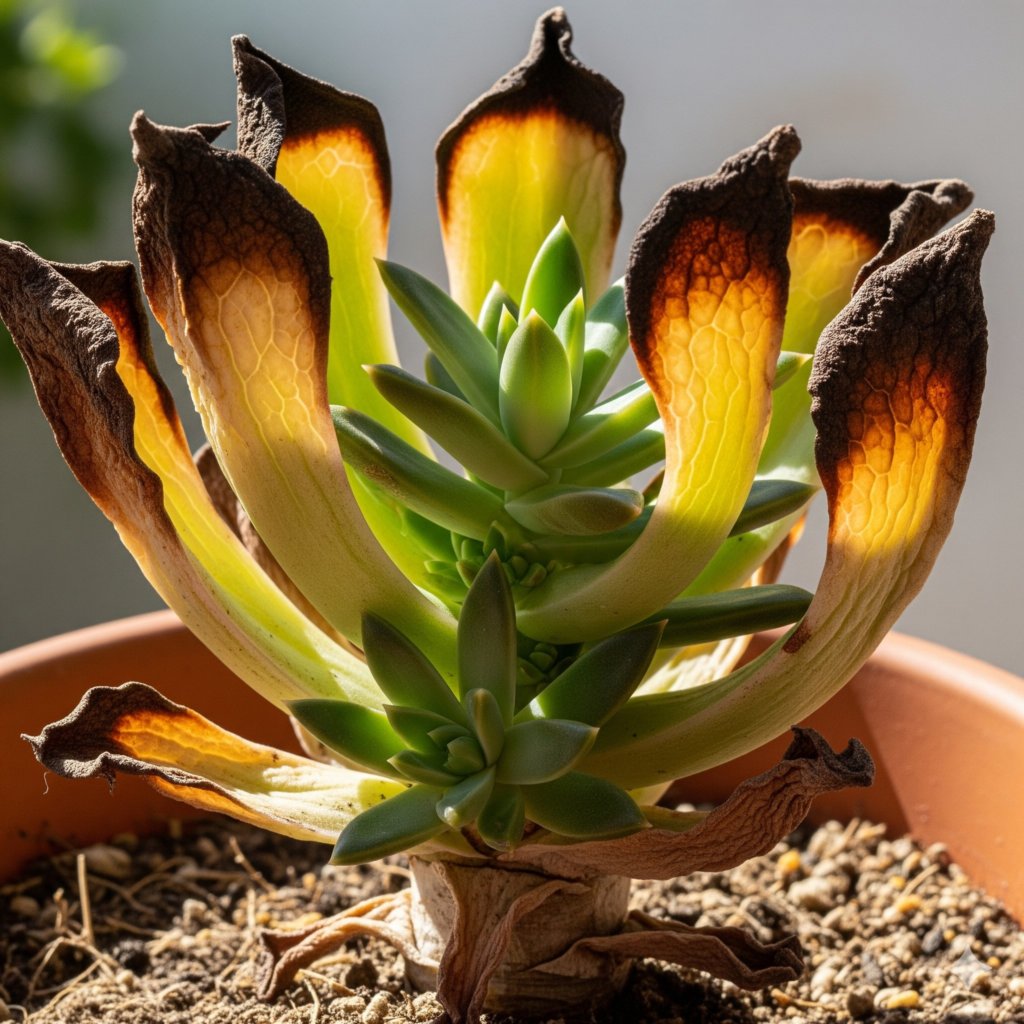
Potassium helps regulate water movement, strengthens cell walls, and supports disease resistance. When potassium is lacking, leaf edges may turn brown or scorched, while older leaves show yellowing.
Succulents with potassium deficiency often look weak and less resilient to stress. Growth may be thin, and leaves can appear soft or poorly formed.
To fix this, use a fertilizer that includes potassium, often noted as the last number in the N-P-K ratio. For example, a 10-10-20 mix provides extra potassium. Consistent watering practices also help, since potassium moves through the plant with water.
Magnesium and Iron Deficiencies
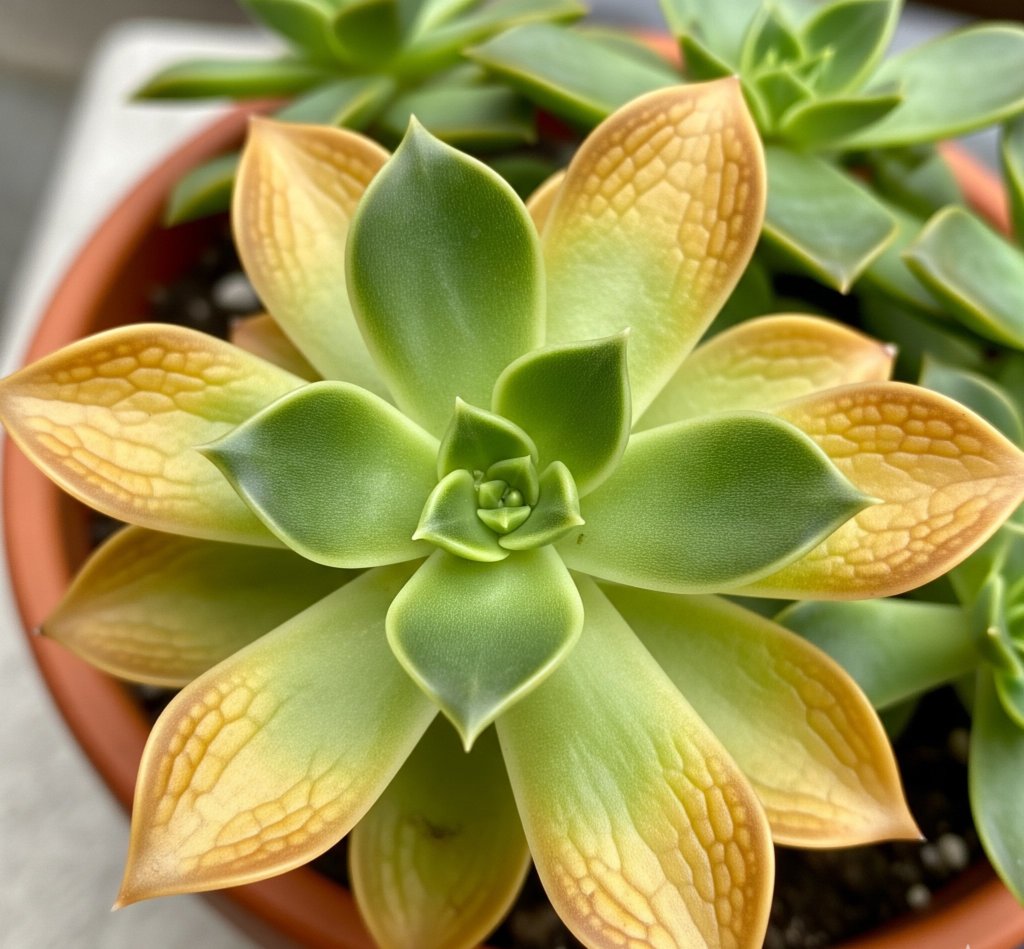
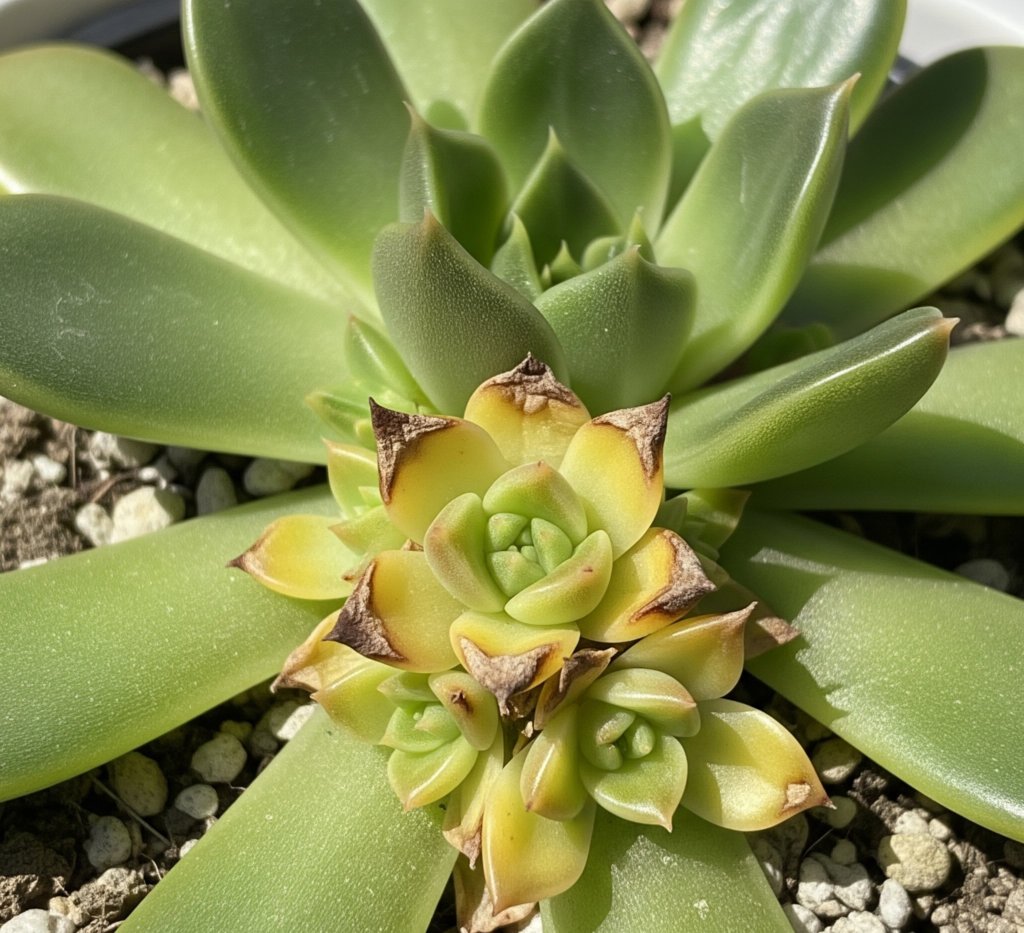
Magnesium is needed for chlorophyll production, which drives photosynthesis. A magnesium deficiency usually shows as older leaves that can turn pale yellow or a bronze color.
Iron deficiency looks similar, but it affects new leaves first. Young leaves turn yellow, while older leaves remain mostly healthy. This happens because iron is not mobile within the plant.
You can correct magnesium deficiency by adding a small amount of Epsom salt (magnesium sulfate) to the soil or water. For iron deficiency, check soil pH first. If the soil is too alkaline, iron becomes unavailable. Using a chelated iron supplement can also restore healthy green growth.

